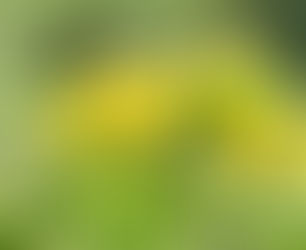QUILLAY
- medgardenchile
- 2 dic 2020
- 3 Min. de lectura
Actualizado: 25 oct 2023
Quillaja saponaria Molina
Diciembre 2020
Un árbol chileno endémico. Crece desde Coquimbo al Biobío, tanto en el litoral como en el valle central, en ambas cordilleras, y se encuentra ahora en flor en La Aurora. Prefiere las laderas de exposición norte y suelos más profundos, aunque también crece en planicies y laderas de exposición sur.
Es un árbol perenne de hasta 15 m de altura por 12 de ancho, con un follaje brillante verde vivo. Su tronco basal raras veces sobrepasa en mucho 1 m de altura, pero puede llegar a tener más de 1 m de diámetro. Las flores, reunidas en corimbos son blanco-amarillentas. De cerca muestran las piezas florales en forma de estrellas concéntricas de 5 puntas alternantes. Florece de octubre a enero y el fruto es un plurifolículo de 5 valvas que, una vez dispersadas sus muy numerosas semillas aladas, quedan vacíos, secos y prendidos a las ramillas por largo tiempo.
Es un árbol imponente por su copa extendida y su hermoso follaje. Al igual que otras especies del bosque esclerófilo ha sufrido tanto por el nulo manejo secular y las prolongadas sequías recientes, como por la corta para producir carbón en hornos de barro, cuyos restos abundan en La Aurora. Su corteza se ha empleado tradicionalmente para lavar debido a su alto contenido de saponina (del latín sapo = jabón) y actualmente el quillay se cultiva con el fin de obtener este producto que se exporta en bruto para ser refinado y vender sus subproductos con distintos fines industriales que incluyen la producción de alimentos, cosméticos y medicamentos.
Sus flores son muy visitadas por las abejas y existen varios productores de su excelente miel en La Aurora
Its flowers are highly visited by bees and there are several producers of its excellent honey in La Aurora
QUILLAY
Quillaja saponaria Molina
December 2020
A Chilean endemic tree, it grows from the Coquimbo to the Biobío Region, both near the coast and in the central valley, in both mountain ranges, and is now in bloom in La Aurora. It prefers northern exposure slopes and deeper soils, although it also grows on flat land and on southern slopes.
It is an evergreen tree up to 15 m tall by 12 m width with shiny bright green foliage. Its trunk is seldom much more than 1 m tall at the base, but may exceed 1 m in diameter. Its flowers, forming corymbs, are yellowish white. Seen from close up, the floral parts are clearly recognizable, arranged in the form of concentric alternating 5-pointed stars. It blooms from October to January and the fruit is a 5-membered plurifolicle that, once its very numerous winged seeds have dispersed, remain empty, dry and attached to the twigs for a long time.
It is an imposing tree because of its spreading top and its bright foliage. Like other species of the sclerophyllous forest it has suffered both from centuries-long neglect and the prolonged recent droughts, and from its logging to produce charcoal in clay kilns, the remains of which abound in La Aurora. Its bark has been used traditionally for washing due to its high content of saponin (from the Latín sapo = soap), and nowadays Quillay is farmed to produce crude saponin which is exported to be refined and sold as purified fractions and derivatives for different industrial uses including food, cosmetic and drug production.
Fuentes/ Sources:
Flora nativa de valor ornamental. Chile Zona Centro.P. Riedemann & G. Aldunate. Ediciones Jardín Botánico Chagual.

Flores estrelladas de Quillay
Star-shaped quillay flowers

Árboles de tamaño medio cubiertos de flores
Medium-sized trees in full bloom

Abundancia floral
Floral abundance









































































Comentarios